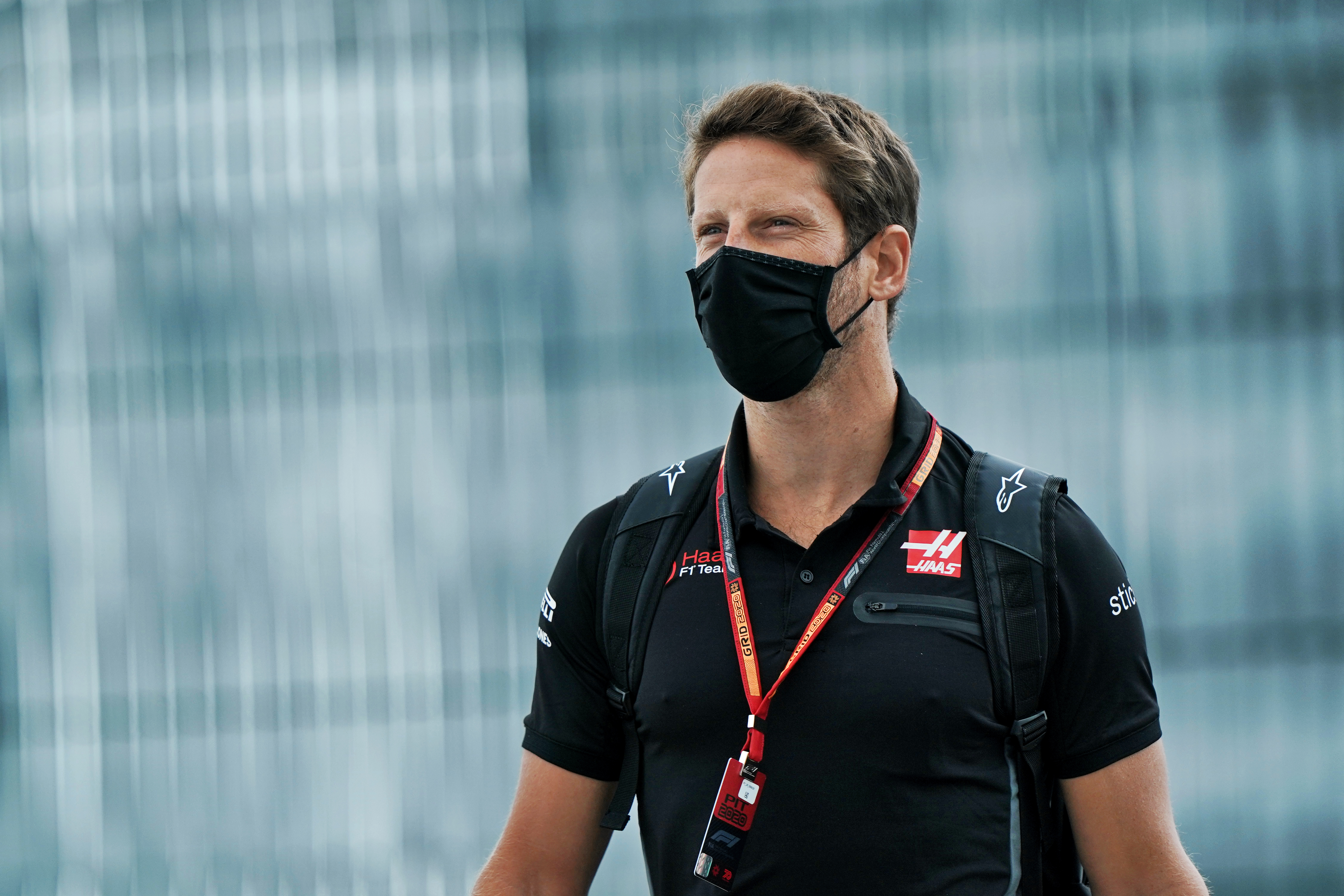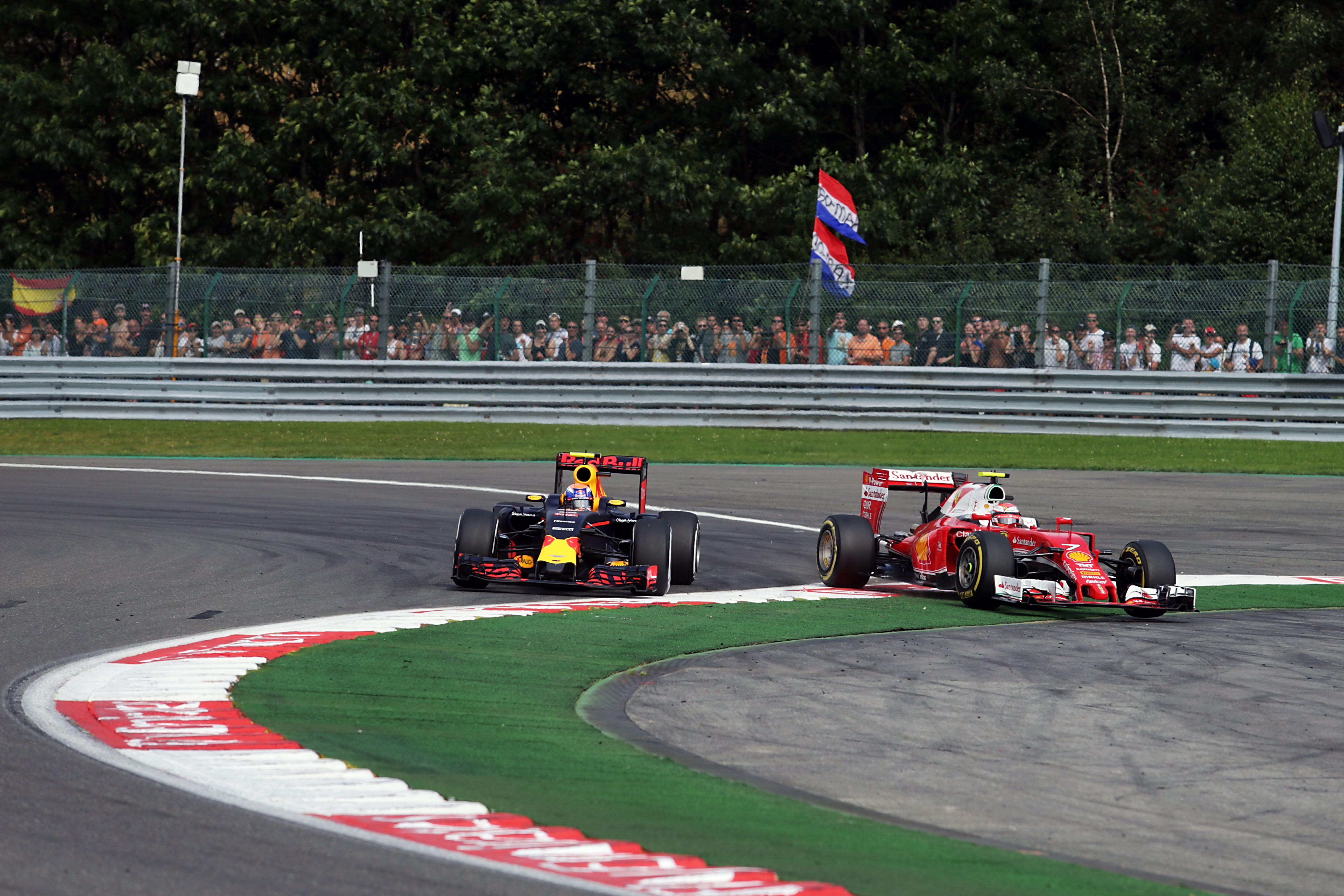Up Next

Romain Grosjean says he made his aggressive moves on the straight while defending against Carlos Sainz and Daniel Ricciardo in the British Grand Prix, which earned him first a black-and-white flag then an official warning from the stewards, because there were “no real rules” preventing it.
The Haas driver pointed to the fact Max Verstappen has got away with such moves in the past and that, while he says he doesn’t like them, he used the tactics to attempt to hold onto track position in the race at Silverstone thanks to the lack of an explicit regulation against it and previous precedents.
Grosjean was the only driver yet to stop for tyres and, having jumped as high as fifth, was trying to retain track position when he moved right to cover Sainz on the approach to Stowe and later onto the left to defend against Ricciardo on the Wellington Straight approaching Brooklands.
While Grosjean accepted he moved late, he stressed that he left a car width, which meant it was possible for his rivals to respond. This was broadly accepted by the stewards, who stated that “Ricciardo agreed that this situation, while close, was manageable by him as the following driver”.
“In both cases I moved a little bit late but I always left a car width,” said Grosjean. “They [the stewards] want to clarify the fact that we cannot move that late, which I agree with but there were no real rules beforehand.
“Max Verstappen used it a lot during his racing, so I thought ‘why not take advantage of that?’ because it’s not every day that we’re running sixth or seventh in the race and I had to give everything that I could to defend.
“Looking at them, I got a bit caught by the delta speed and both of my mirrors were twisted down at the beginning of the race, so I couldn’t really see much in them.
“If there’s a clarification and we can’t move that late, I’ll take that into account. But to that point I used the limit, but I was trying to defend as hard as I could.”

Grosjean, who is the head of the Grand Prix Drivers’ Association, said that while drivers had discussed putting a rule in place nothing was formalised.
His Silverstone offences were defined as “moving under braking” – although both incidents happened just before the braking zone – but the FIA International Sporting Code only explicitly demands a car’s width is left in the case of a car moving to defend then trying to retake a line, as well as prohibiting “abnormal” moves in general.
“A few years ago, we really wanted to put a rule in place that you can’t move under braking following some of Max’s defending, but there weren’t any put in action and therefore I pushed the limit and got a warning, but I don’t regret anything,” said Grosjean.
“If there is a clarification that we need to move early I will, of course, do accordingly but to that point.
“You can argue that I wasn’t driving dangerously because I was always leaving a car width, there was always the room for the other car to go next to me.
“A bit of a clarification would be nice, but also we don’t want to push the ‘let them race’ [approach] away from Formula 1, because we want to have fights.”
Ricciardo said he believed the move Grosjean made on him was too aggressive, echoing Sainz’s description of it as “very dangerous”, and agreed that it needs to to be discussed among the drivers.
He felt that such moves had already been addressed by drivers, which was supported by a reference in the verdict of the FIA stewards that stated the drivers had accepted such a “movement in reaction” was considered potentially dangerous “as a general principle”.
“We’ll probably bring it up in the drivers’ meeting next week just to get the other views but I’m sure everyone’s on board,” said Ricciardo, who also discussed the incident with Grosjean after the race.
“It was just a little too late and I think what we tried to get through with the stewards and they brought it forward was that with drivers reacting to a move, as the car in front you should be the car that makes the first move and dictates where you want to be and if you want to defend, make it obvious.
“Romain, I think, took it all on board and it was pretty civil.”
When asked by The Race about the precedents set by Verstappen’s driving in the past and Grosjean citing it as justification, Ricciardo said: “It might have been 2016, I think Max was doing it a few times under braking and we addressed it and I felt like we had moved on from.

“Behaviour has been pretty good from memory for the most part, the last few years.
“I think if we bring it up in drivers’ briefing on Friday and just open the conversation again I think maybe he’ll realise it’s a bit more [serious] because I’m sure all the drivers, if they see it, will say ‘yeah it’s a bit on the edge’.
“The main thing is it’s an unnecessary risk for all of us, even for him in that case he risks getting a puncture or something so I think it’s just for all of us and the longevity of our race.”
FIA race director Michael Masi confirmed that these defensive moves will be discussed in the drivers’ briefing at the upcoming 30th Anniversary Grand Prix.
He added that the warning flag followed by the referral to the stewards was a result of conversations with the drivers last year requesting a clampdown on such moves.
“It’s followed extensive discussion with the drivers throughout last year,” said Masi.
“One of the big areas that the majority of them asked for is for a clamping down on drivers moving under brakes, so as a result this is the first element of that that we’ve seen this year.
“As a result, the first time it happened, the black-and-white flag was shown and on the second occasion it was referred to the stewards for them to do a further investigation.
“We’ve agreed that we’ll discuss it at the next drivers meeting and go from there. It’s actually come about as the result of the drivers requesting a crackdown in that area because they thought that it was something that needed to be clamped down on a bit more.”
While the formal warning to Grosjean has no specific impact on the driver, as it carries with it neither superlicence penalty points nor the possibility of contributing to a grid penalty as three reprimands do, Masi said it was issued to ensure the incident was logged by the FIA for future reference.





